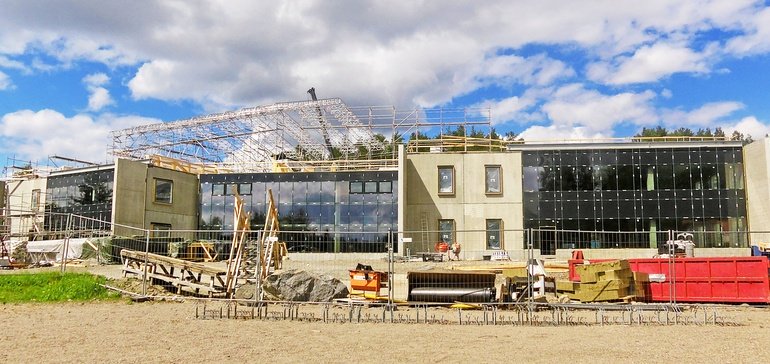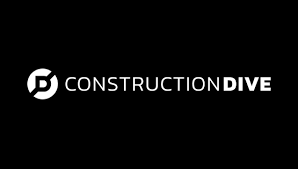A roll call of some important education contractors finds that labor and material prices and complex design, health and technology needs are putting pressure on the delivery of school builds.
AUTHOR: Joe Bousquin | PUBLISHED: Feb. 11, 2020
When California-based C.W. Driver Cos. began work on the new 94,000-square-foot K-8 Cadence Park School campus in Irvine in 2016, the overall construction costs came in at $475 per square foot.
But in 2019, as the firm started mapping out the construction of Heritage Fields School No. 3, another K-8 campus for the Irvine Unified School District, costs had surged to $598 a square foot.
That’s a jump of 26% in just three years, and it echoes a trend experienced around the country.
Basic algebra: Costs are adding up
“Over the last few years, the cost increase per square foot has been abnormally high,” said Jonathan Keene, senior project manager at C.W. Driver, which specializes in K-12 and higher education construction. “We’ve seen abnormally high increases in labor costs as well as huge increases in material costs like structural steel.”
School construction costs aren’t just rising in high-priced locales like California. From Maryland to Washington State, school and university construction projects are seeing cost increases that are forcing school boards and university trustees to reconsider their original plans or go back to the drawing board altogether.
In an extreme example at St. Paul (Minnesota) Public Schools, cost estimates on 18 projects grew by more than 60% between 2016 and 2019, according to the Twin Cities Pioneer Press newspaper.
“In some of the bigger districts, where they thought they could do 30 schools, they’re now saying we can only do 18,” said Mary Filardo, executive director of the Washington, D.C.-based 21st Century School Fund, a nonprofit that supports and advocates for improved school infrastructure nationally. “They’re definitely feeling it.”
On a national basis, school construction costs now range from a low of $230 per square foot for a high school in Nashville, to a high of $558 in New York, according to construction cost consultant Cumming. Dan Pomfrett, Cumming’s chief forecaster, said costs in the sector are up around 15% over the last three years. While that’s in line with other sectors of commercial construction, schools’ unique designs can lead to higher overall price tags.
“Add in a gym, science building or magnet school, and it goes up from there,” Pomfrett told Construction Dive. “There’s a lot of sticker shock.”
Higher construction costs are being amplified at the university level, too, especially as institutions compete for a shrinking number of enrolled students.
“We’re really seeing an arms race in higher education right now,” said Ripley Bickerstaff, director of business development at Birmingham, Ala.-based Hoar Construction, which specializes in university projects. He points to two-story recreation centers with hanging, inclined running tracks and 360-degree motion-capture systems in health sciences departments.
“Whatever it’s going to take to recruit students and get their enrollment numbers up, that’s what they want,” he said.
A course load of causes
Like other sectors in commercial construction, labor and material costs are playing an increasingly larger role in development costs. School boards’ appetite for technology has also contributed, as has the length of the current economic expansion. Schools’ longer lifespans, robust structural specifications and more specialized indoor air quality requirements all come into play as well.
For example, at Fairfax County Public Schools, the largest school district in Virginia, assistant superintendent Jeff Platenberg said that HVAC and mechanical systems at schools are more expensive because of changing perspectives of children’s unique physical needs.
“Air inflow and the conditioning of air have more stringent requirements, because you’re dealing with children, and children breathe at a more rapid rate than adults,” said Platenberg. He also noted that stormwater management requirements, due to schools’ large tracts of playing fields, recreation courts and expansive roofs, also drive up costs.
Given the length of the current economic expansion, schools are now building during the upside of the cycle, whereas traditionally, educational institutions tended to build when the market was down and costs were more favorable, said Tony Schmitz, an architect at Kansas City-based Hoefer Wysocki Architecture, whose portfolio includes more than 1.9 million square feet of education facilities. “But we’ve been in an up economy for so long now, they are building in an up cycle, which leads to an uptick in construction costs,” he said.
In addition, there’s the ballooning amount of technology and automation that’s going into today’s schools to make sure they will provide students with the tools they need well into the future.
“With the increased focus on technology, science and the overall student experience, the projects we build today look much different than the ones we did a decade ago,” said Tony Church, executive vice president of operations, at St. Louis-based McCarthy Building Cos. “Some of our K-12 projects are more complex and costly than the higher-ed projects we’ve completed recently.”
Security is also driving up costs, with electronic access control becoming more common. Defensive design elements, such as wing walls for students to hide behind in case of a lockdown, also contribute, Filardo said.
Stay in school: Where’s the labor?
Against that backdrop, schools are dealing with the same labor issues as other sectors of commercial construction.
“You literally have a workforce that will walk off the job in the middle of the day to go down the street where somebody’s paying 25 cents more an hour,” said Schmitz. “The labor force bounces around daily.”
It’s also increasingly hard to get subs to bid on jobs, Bickerstaff said.
“We used to have six mechanical guys looking at a job, and now you’ll be lucky to get two or three,” he told Construction Dive. “They’re booked. And for that reason, you’ve basically got two guys competing over this job, so you’re going to see a 10% increase right there, just because there’s nobody else to do it.”
That’s a factor that impacting all facets of construction. Construction managers are being realistic about what it costs to fill these positions, and as a result, customers are seeing higher bid prices, said Michael Regan, project management practice leader at Middletown, N.J.-based engineering firm T&M Associates.
“At any given time, there are three times as many jobs on the street as there were ten years ago,” he said. “We are in a bidder’s market.”
Economics 101
To deal with the rising costs, contractors and their subs are turning to various strategies, including writing cost escalation clauses into contracts.
“Contractors need to do a lot more today to protect themselves from rising costs, including building in cost escalators or fuel surcharges to their contracts,” according to Ian Shapiro, a CPA and co-leader of the real estate and construction practice in the Miami office of tax and accounting consultancy BDO.
When costs do escalate beyond expectations, value engineering becomes a contractor’s best friend. At the Performing Arts Complex of Woodbridge High School in Irvine, California, C.W. Driver shaved $2 million off the numbers by only using shot-blast concrete block on the exteriors, instead of throughout the building, while re-drawing window and door openings to line up with the factory measurements of whole blocks to reduce the cutting needed in the field.
But while material prices can be tied to commodity indices, labor costs are still an “X factor,” the proverbial moving target that contractors need to set a bead on early. Key to that is having a binding, detailed bid schedule up front, as is holding subs to it for the scheduled duration of the project, said Sean Edwards, Chief Operating Officer of the education arm at Boston-based Suffolk Construction, which is currently working on projects at Northeastern and Boston University.
“We have a plan and control process to bring trade partners on as early as the preconstruction phase,” he said. “That way, we can all work on the same design alongside the architects and owners to better predict constructability issues that can drive up costs — before they happen.”
Key to the process are detailed check-ins with the whole team every two weeks, he added.
Others hone in on the labor issue by making sure they’re the contractor of choice for their subs. “Companies are getting creative to pay subcontractors a lot quicker, to help build loyalty with their subs,” Shapiro said. “Sometimes, for that prompt payment, they may even get a little cost reduction.”
At Fairfax County Public Schools, Platenberg strives to be a client of choice, too. “We pay on time to keep the blood flowing in the arteries,” Platenberg says. “That keeps people focused.”

